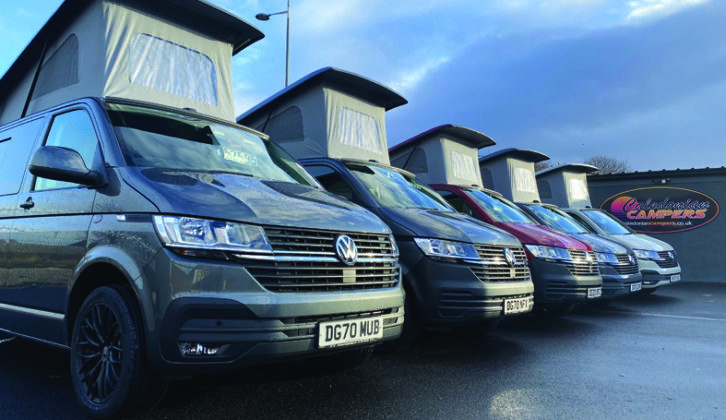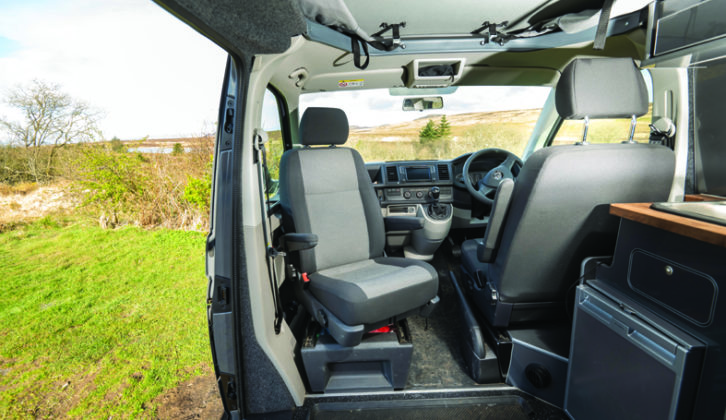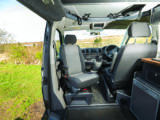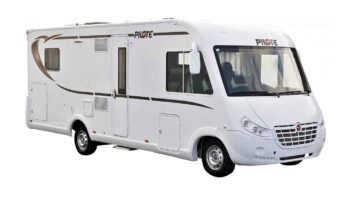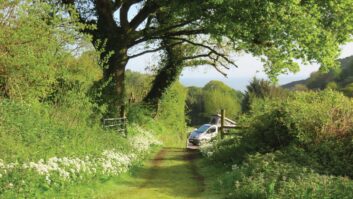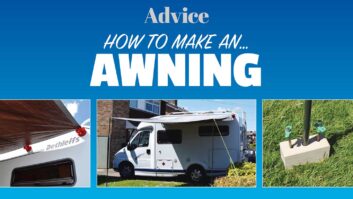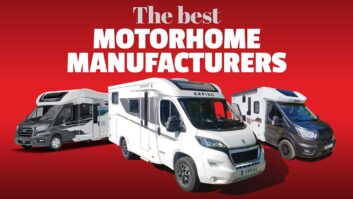With a long history of campervan ownership, Andy McCandish has bought, converted and driven them for more than 250,000 miles over the past 13 years. They’ve been his everyday vehicle and workhorse for travelling the country and now, with two children, they are firmly ingrained in family life. As his latest van is converted by local Glasgow firm Caledonian Campers, Andy shares some of the knowledge built up by himself (and them) over the years on how to choose a base van.
You can also find out how David and Gillian Rivers got on with converting a double-decker bus into a mobile farm.
The purchase
Having decided on the size of van I needed for my conversion, the grisly business of choosing one and parting with the cash loomed. I knew that I needed a short-wheelbase vehicle for everyday use, but now moved to the specifics.
Choosing the brand was always going to be pivotal. I considered a few, speaking to friends who had made the leap from the standard VW, and took some for test drives. They all drove well, but various anecdotal reports of errant trim, garage visits for niggly faults and premature corrosion kept me focused on the VW.Caledonian Campers, with long experience of their own and customers’ vehicles, also opts for VW based vehicles. ‘There are many excellent parts out there designed to convert a VW Transporter into a campervan,” says Isla Bissett, MD of Caledonian Campers. “They’ve been around for much longer in the campervan format, so the parts tend to be more established and more refined. That’s just one of the reasons why we focus on Transporters.”
So, along with the excellent record of my last Volkswagen Transporter – sold, still running like a watch with 250,000 miles on the clock and barely a flake of rust – it would take a lot to make me look beyond the VW.
Throw in a higher-than-average residual value – even with that initial premium outlay, the overall cost of ownership can plummet well below that of a standard car if you take care of your camper – and in my opinion, you have a clear winner.
Search for the right model

With that decision made, I started the search. After extensive scanning through AutoTrader, I learned that tailgates are far rarer than barn-doors in the used market.
You could, of course, convert a barn-door van, but my previous campervan had been a tailgate, and experience suggested that it was worth the wait. I knew I could lift the door and stay dry while wrangling bags, kids or gas bottles, and in this case, use the space created for a mobile shower.
Barn-doors also make bike racks more tricky, splitting the rear in half as they do, and I was planning to fit one of those as well. So I settled in to wait for a tailgate to show itself.
You have a bewildering array of options when cruising the used adverts. Many opt for a Kombi style, with the rear windows in place, but Isla suggests this isn’t the most efficient path.
Design options

“A van with windows specced in the factory will cost you more than retrofitting windows at the time of conversion. You’ll also pay a premium on the secondhand market for Kombis. We find it easier and neater to do a van without windows. Our advice is always to go for a plain panel van.”
Bench seats are also a question mark. Yes, you can put a swivel plate onto them and turn them to face the living area, but there are a number of disadvantages to consider.
You won’t be able to stand up from the driving seat and walk through into the back of the ‘van, something that is very handy in poor weather. Instead, with the bench seat blocking the way, you have to get out by one door and back in through the sliding door.
In addition, the bench seat turning mechanism is far more cumbersome than the captain’s seat swivel plate, needing lots of shuffling, loosening, arm power and generally a wide-open passenger door to get the job done.
Friends who have this set-up told me that they often find themselves turning into a midge buffet as they wrestle with the swivel outside!
Of course you can pull out the bench seat and bolt in your own captain’s seats, so benches are by no means a deal-breaker.
I knew my day had come when I found an advert on AutoTrader from a Leicester VW dealer offering a plain grey panel van. But what really caught my attention was the set-up and the extras on this vehicle
It was the Start Line basic model, but the dealer – the previous owner – had factory-fitted twin captain’s seats on swivel plates, added a tailgate, uprated the stereo system and – fall to your knees in gratitude – installed air conditioning.
I couldn’t have specced it better if I had bought it myself new. And it had 4000 miles on the clock – as well as £8000 off the original price.
Having come from the 174bhp Transporter, I was a little concerned about the 102bhp engine on this one, but it seemed worth the risk. There is always the remapping route, I figured.
Having lived with it for a while, I am surprised how punchy the 102 is, gamely nipping off the mark when needed. I may one day bump it to 140, but so far, so satisfied.
Completing the deal
The phone was in my hand before I new it and the commitment to the new project was very soon complete.
A bit of sweet-talking to the sales rep, some faith in their word and a few quid bunged to a car transporter coming through Leicester meant I could meet the van in nearby Stirling for the first time as it rolled off the back of a lorry. This does illustrate the fact that the right base vehicle really is worth waiting for, and won’t necessarily be on your doorstep when it does surface – be prepared to travel or, as in my case, trust the dealership that all is well and find a way to get the vehicle to you. VW Parkway in Leicester, hats off to you!
This is mostly assuming that, like me, you will be looking for a secondhand van. I always would by nature, not being a big new-vehicle buyer, but some interesting facts came up during my chat with Isla at Caledonian.
She points out that the secondhand market as it currently stands is very pricey for Transporters – good if you are moving one on, but not so good if you are trying to get in on the game.
This means it is always worth asking how much a new vehicle would be – Isla told me that the difference in price could be as little as £6000.
If you liked this… READ THESE:
The pros and cons of owning a classic campervan
How to choose a new campervan conversion
If you’ve enjoyed reading this article, why not get the latest news, reviews and features delivered direct to your door or inbox every month. Take advantage of our brilliant Practical Caravan magazine SUBSCRIBERS’ OFFER and SIGN UP TO OUR NEWSLETTER for regular weekly updates on all things caravan related.
Barn-doors also make bike racks more tricky, splitting the rear in half as they do. I was planning to fit one, so I settled for a tailgate
